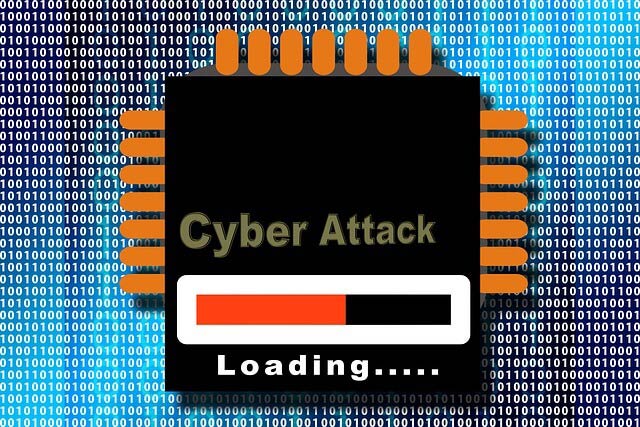Hacking Habits: How Can Avert Cyber Attack?
Companies are spending the huge investment for prevention of cyber attacks, but seem lost the battle against evolving new generation of cyber attack. Hackers have become smarter and innovative so they can cause heavy damage to the organization. To defeat the hacker in this ongoing battle, you have to think like a hacker then only you can secure your organization. Before catching them, it is recommended to know their psychology and habits that would help an organization to take proper countermeasures against them.

Image Credit: Pixabay
The Motto Of Cyber Attack:
If we look at the motto of cyber attack, it may be for financial gain, getting knowledge or curiosity. According to a well-known study, there are 58% attacks happen due to financial gain. Currently, public sector, online business, airlines, banking are not safe against cyber attack. However, they have invested millions of dollars in preventing cyber hacking but seem lacking to cope up the requirement. Because in the recent year 2014, there were 155.GOV and.NIC domains were hacked.
Now, look at hackers habits which are responsible for the cyber attack:
What Exactly Hackers Look For?
After getting an idea of a motto in the above discussion, it is necessary to read the hacker’s mind means what they look for an attack or we can say what general habits of hackers are. The main four habits we have discussed below to represent the common habits of hackers that they have already in their mind before hacking any system.
1. Detecting Weakness
The main target of hackers is to find a weakness in the system or server from where the culprit can start a journey to gain the control of the system. In current time, software developers release an update for their application to remove bugs and try to keep the system secure against evolving hacking techniques. Different vulnerability scanners and software are there which look for basic vulnerability like Cross Site Scripting (XSS), SQL injection, XPath injection, CRLF injection etc. The scanners help IT individuals to find the loophole in the system.
2. Detecting Logical Vulnerability
Software or application also faces logical vulnerability besides the technical vulnerability. The logical flaw relates to flow caused due to logic applied in the application or software development rather than the problem in the source code. Attackers also concentrate on such type of vulnerability that gives attackers the system access. The logical vulnerability may include an error in session timeout command, monetary transaction fault, privilege escalation, parameter manipulation, access to unauthorized data, cookies tampering, LDAP parameter identification, Business flow bypass.
3. Exploit Weakness
After getting an idea of vulnerabilities, attackers inject malicious code, malware or Trojan payload to infect the system, software, application or web server. There is nearly a huge millions of dollar damage, company faces every year due to cyber exploitations. It is advisable to ensure that your IT department monitors the ongoing activity of web server systems and regularly updates the application to avert exploitations. A single weakness can cause severe loss to the company. Attackers need access to the vulnerable system and try to increase the privileges of the user account with the exploit.
4. Severe Attacks
The main thing is the type of attack that hackers use to gain access to the system. In many cases, the motto of the attacker/hacker is to steal information by exploiting the weakness in an application or web server, which can be fixed immediately to restore the process. However, there are different severe attacks, which can bring down the whole server and make it inaccessible to anyone. The DDoS attack is one of severe attack in which the server remains busy in working on requests, sent from malicious bots. Hackers often demand ransom amount to stop such attack.
Countermeasures:
An organization should take precautions to prevent nefarious actions of hackers. Few of them are as below:
- Antivirus is really a worthy option to avoid malware, virus or any infection that can cause damage to the system. Use anti-malware scanner for the company’s website that regularly monitors nefarious activities and alert the person, if any suspicious action is found on a website.
- Many businesses use a wireless network, but they forget that unprotected Wi-Fi seems ripe fruit for hackers. Hackers always try to break into such unsecured Wi-Fi and gain access to the system. So always keep Wi-Fi networks protected with a complex password or disable SSID option so that persons with the similar name of your network can access it.
- Security experts should monitor malicious IPs, machine fingerprints, bot signature to gauge the attack patterns.
- An organization should conduct employee training to make aware them about cyber attacks and its dangers. The training should include BYOD rules, security exercises, awareness for different hacking techniques etc.
- Many operating systems comes with the feature named full disk encryption, an organization should enable it to make all files and data encrypted, placed on computers.
- The organization should have firewall protection for unauthorized access of the network area. It protects a number of computers set in a LAN system against unauthorized or third party access.
Conclusion:
If organizations are aware of the weakness of its web server and application, they can prevent potential cyber attacks. From the above piece of information, we got an idea that hackers always look for weak side of the server or application so we should measure the level of vulnerability and take proper countermeasures against such vulnerabilities.


